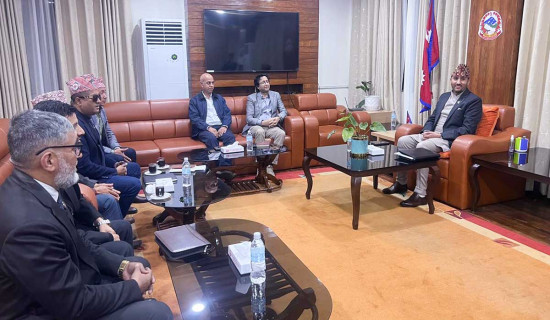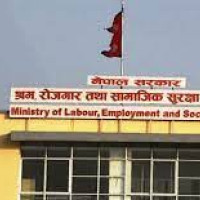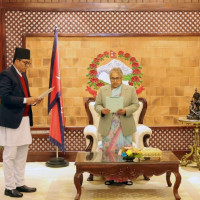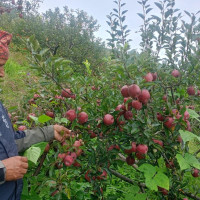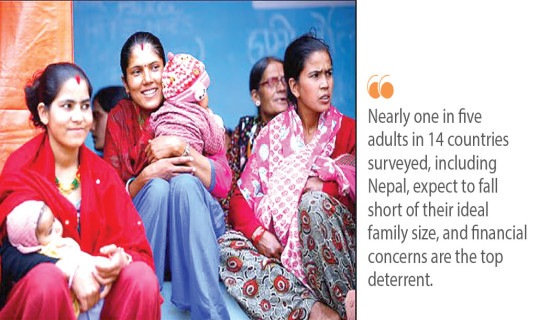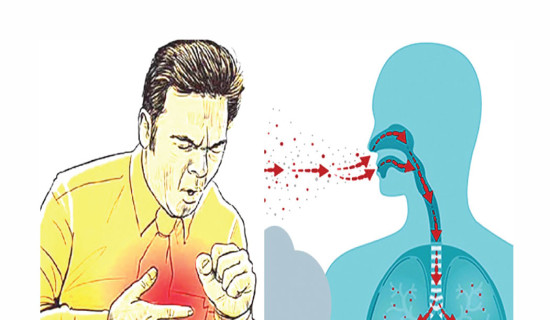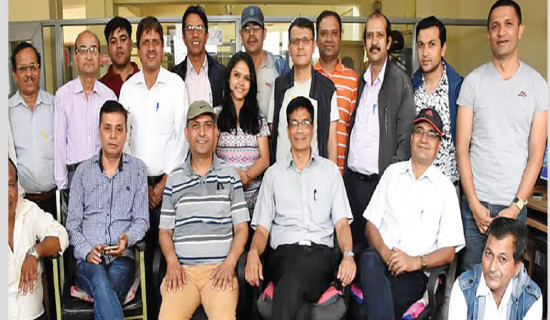- Wednesday, 17 December 2025
COVID-19 cases in upward swing, new subvariant suspected
Kathmandu, July 5: The nation has witnessed an increase in the daily caseload of COVID-19 for the last few weeks. According to the data of the Ministry of Health and Population (MoHP), the infection rate of COVID-19 was less than 1 per cent before June 15, but now it has increased to 2.5 per cent on average. The MoHP has recorded 40 new cases of COVID-19 on Monday. Of them, 34 cases were detected through RT-PCR test and six through antigen test.
Of the total 3,010 tests conducted in the last 24 hours, 1,847 were Real-Time Polymerase Chain Reaction (RT-PCR) tests while 1,163 were antigen tests, informed the MoHP. The infection rate through the RT-PCR test was 2.15 per cent today. The active caseload increased to 348 on Monday. The figure was 240 last week.
Dr. Sher Bahadur Pun, Chief of Clinical Research Unit at Sukraraj Tropical and Infectious Disease Hospital, said that the infection rate in Nepal might have increased due to new variants.
The number of COVID-19 cases has been increasing in neighboring India and other countries due to the BA.4 and BA.5 subvariants of Omicron. When COVID-19 cases rise in India, the risk increases in Nepal, as many Nepalis live and work and frequently travel back and forth between the two countries.
The decline in new cases has made people reluctant to follow safety health measures including wearing face masks, washing hands and maintaining social distance. However, COVID-19 is changing faces and is circulating in communities.
“We must be cautious, closely monitor the surge in India as the past experience shows that a new surge emerges if cases start rising in India,” said Dr. Pun.
Health experts suggested the authorities to reinforce safety health protocols including facemasks, launch awareness about the growing risks of the infection and encourage people to take booster shots of vaccine against COVID-19.
As vaccines are the only reliable way to lessen the morbidity and mortality of COVID-19, one should not wait until a new surge to take first dose, second dose or the booster shots of vaccine against COVID-19, according to doctors.
Dr. Kedar Baral, a public health expert, said that the concerned authorities must study the types of patients admitted to the hospital to find out why the infection rate is increasing in Nepal.
“At a time the infection rate is increasing, the authorities must revive contact tracing, quarantine facility and isolation wards as the spread can be contained, if action would be taken at the early stage,” said Dr. Baral. Dr. Chuman Lal Das, director at the Epidemiology and Disease Control Division, said that the infection rate in Nepal has increased due to the negligence in adopting public health standards and the movement of people at open border checkpoints.
Dr. Das said that with the increase in the infection rate in Nepal, strict monitoring has been carried out at the entry points to Nepal and arrangements have been made for testing among the India returnees.
He also informed that gene sequencing has been carried
out at the National Public Health Laboratory in Teku to find out the variant that is spreading in Nepal as of late.
"No new variants of gene sequencing have been found at the National Public Health Laboratory (NPHL) so far; we have got information from Dhulikhel Hospital about the new subvariant of Omicron which was confirmed in the laboratory of the hospital,” he said.
The NPHL has been conducting gene sequencing of the samples collected from the infected people, said Dr. Das and added that the result will come within a few days.



